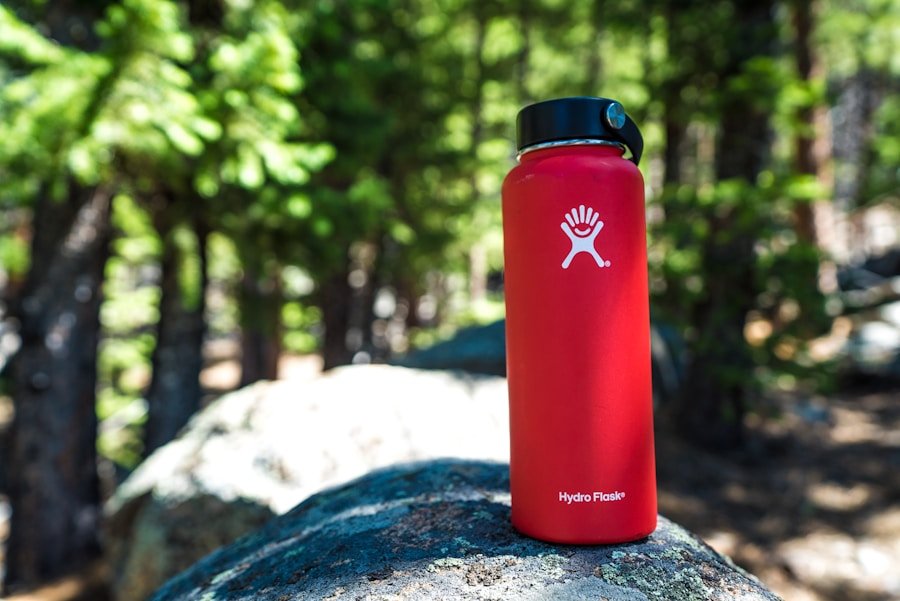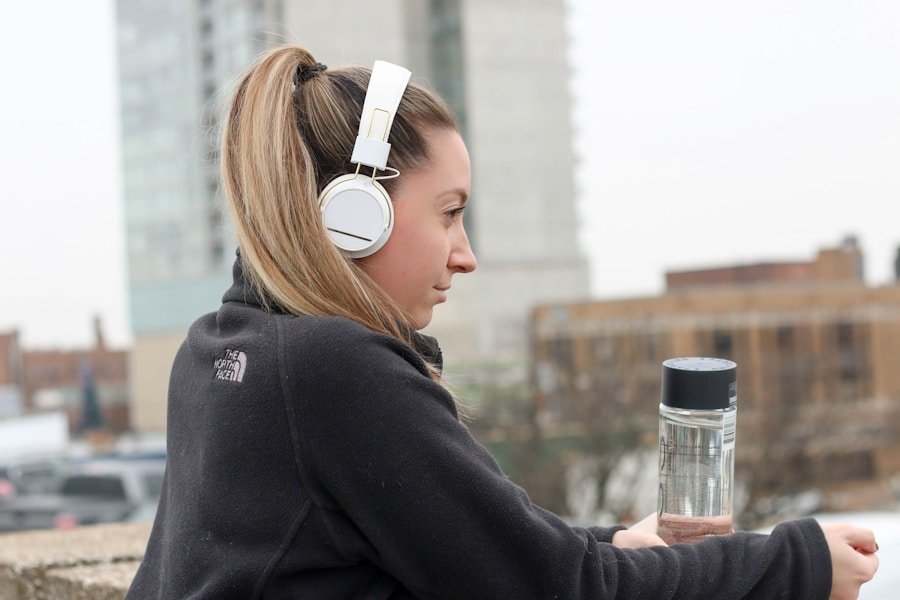Climate has a substantial impact on daily water intake, yet it is frequently underestimated. The body’s optimal functioning is heavily dependent on climate, with factors such as temperature, humidity, and physical activity levels significantly influencing individual hydration requirements. Recognizing the correlation between climate and water consumption is vital for preserving good health and preventing dehydration.
Key Takeaways
- Higher temperatures lead to increased water consumption as the body works harder to cool down
- Humidity levels can affect hydration needs, with higher humidity making it harder for sweat to evaporate and cool the body
- Hot climates can lead to increased sweat and fluid loss, requiring higher water intake to prevent dehydration
- Different seasons and climates require adjustments in water intake to account for varying levels of heat and humidity
- Considering climate is crucial in understanding dehydration risk and planning daily water intake, with hot and cold climates presenting different challenges for staying hydrated
The relationship between temperature and water consumption
Temperature’s Role in Hydration
Climate plays a significant role in our daily water intake, and one of the most obvious ways is through temperature. When the weather is hot, our bodies naturally sweat more to cool down, leading to a higher rate of fluid loss. As a result, we need to consume more water to stay properly hydrated. On the other hand, when the weather is cold, our bodies may not signal thirst as strongly, leading to a potential decrease in water intake.
Hydration in Hot Climates
In hot climates, it’s especially important to pay attention to our water intake. The body’s natural cooling mechanism, sweating, can lead to significant fluid loss, especially during physical activity. In these conditions, it’s crucial to drink water regularly throughout the day, even if you don’t feel thirsty.
Hydration in Cold Climates
In colder climates, it’s easy to underestimate the amount of water our bodies need. The dry air and increased respiratory rate in cold weather can lead to higher levels of water loss through breathing. It’s important to be mindful of these factors and make a conscious effort to drink enough water, even when the weather is cold.
How humidity levels affect hydration needs
Humidity levels also play a significant role in determining our hydration needs. In high humidity environments, our bodies may struggle to cool down efficiently through sweating, leading to increased fluid loss. This can result in a higher need for water intake to compensate for the additional sweat and fluid loss.
On the other hand, in low humidity environments, such as deserts or arid regions, the dry air can lead to increased evaporation of moisture from the skin and respiratory system, resulting in higher levels of fluid loss. In these conditions, it’s important to be mindful of our hydration needs and drink enough water to prevent dehydration. In high humidity environments, it’s important to be proactive about staying hydrated.
The body’s natural cooling mechanism, sweating, may be less effective in these conditions, leading to a higher risk of dehydration. It’s important to drink water regularly throughout the day and pay attention to signs of dehydration, such as dark urine or dizziness. In low humidity environments, it’s equally important to be mindful of our hydration needs.
The dry air can lead to increased fluid loss through evaporation, making it essential to drink enough water to maintain proper hydration levels.
The impact of climate on sweat and fluid loss
| Climate | Daily Water Intake |
|---|---|
| Hot and Dry | Increased water intake due to higher perspiration and evaporation |
| Humid | Increased water intake due to higher perspiration and reduced efficiency of cooling mechanisms |
| Cold | Decreased water intake due to lower perspiration and evaporation |
| Variable | Fluctuating water intake based on changing weather conditions |
Climate also has a direct impact on the amount of sweat and fluid loss our bodies experience. In hot climates, our bodies naturally produce more sweat as a way to cool down. This increased sweating leads to higher levels of fluid loss, making it essential to drink more water to stay properly hydrated.
In cold climates, our bodies may still produce sweat during physical activity or when wearing heavy clothing, leading to potential fluid loss. It’s important to be mindful of these climate-related factors and adjust our water intake accordingly. In hot climates, it’s crucial to be proactive about staying hydrated.
The increased sweating can lead to significant fluid loss, especially during physical activity. It’s important to drink water regularly throughout the day and consider consuming electrolyte-rich beverages to replace lost minerals. In cold climates, it’s equally important to be mindful of our hydration needs.
Even though we may not feel as thirsty in cold weather, our bodies still lose fluids through sweating and increased respiratory rate. It’s essential to drink enough water and consider consuming warm beverages to help maintain proper hydration levels.
Adjusting water intake for different seasons and climates
Different seasons and climates require different approaches to staying hydrated. In the summer months, when temperatures are high and humidity levels are elevated, it’s essential to increase our water intake to compensate for the increased fluid loss through sweating. In the winter months, when temperatures are lower and humidity levels may be lower as well, it’s still important to drink enough water to prevent dehydration.
Being mindful of these seasonal changes and adjusting our water intake accordingly is crucial for maintaining good health. During the summer months, it’s important to be proactive about staying hydrated. The combination of high temperatures and increased physical activity can lead to significant fluid loss through sweating.
It’s essential to drink water regularly throughout the day and consider consuming electrolyte-rich beverages to replace lost minerals. In the winter months, it’s equally important to be mindful of our hydration needs. The dry air and increased respiratory rate can lead to higher levels of fluid loss through breathing, making it essential to drink enough water and consider consuming warm beverages to help maintain proper hydration levels.
Understanding the role of climate in dehydration risk
Hot Climates and Dehydration Risk
In hot climates, the risk of dehydration is particularly high due to increased sweating and fluid loss. It is essential to drink water regularly throughout the day and consider consuming electrolyte-rich beverages to replace lost minerals. This proactive approach can help prevent dehydration and maintain optimal health.
Cold Climates and Dehydration Risk
In cold climates, the risk of dehydration is still present due to increased fluid loss through sweating and breathing. It is important to be mindful of these factors and adjust our water intake accordingly to prevent dehydration.
Proactive Steps to Prevent Dehydration
By being mindful of how climate influences our hydration needs, we can take proactive steps to prevent dehydration and maintain optimal health. By understanding the role of climate in dehydration risk, we can make informed decisions about our water intake and stay healthy in any climate.
Tips for staying hydrated in hot and cold climates
Staying hydrated in hot and cold climates requires proactive effort and mindfulness of our hydration needs. In hot climates, it’s essential to drink water regularly throughout the day and consider consuming electrolyte-rich beverages to replace lost minerals. It’s also important to avoid excessive alcohol and caffeine consumption, as these substances can contribute to dehydration.
In cold climates, it’s equally important to drink enough water and consider consuming warm beverages to help maintain proper hydration levels. In hot climates, it’s crucial to be proactive about staying hydrated by drinking water regularly throughout the day and considering consuming electrolyte-rich beverages. It’s also important to avoid excessive alcohol and caffeine consumption, as these substances can contribute to dehydration.
In cold climates, it’s equally important to be mindful of our hydration needs by drinking enough water and considering consuming warm beverages.
The importance of considering climate when planning daily water intake
Considering climate when planning daily water intake is crucial for maintaining good health and preventing dehydration. Climate directly impacts our hydration needs through factors such as temperature, humidity levels, and physical activity levels. Failing to adjust our water intake based on these climate-related factors can lead to dehydration, which can have serious consequences for our health.
By being mindful of how climate influences our hydration needs, we can take proactive steps to prevent dehydration and maintain optimal health. It’s essential to consider climate when planning daily water intake in order to ensure that we are meeting our hydration needs. Factors such as temperature, humidity levels, and physical activity all influence how much water our bodies need.
By being mindful of these climate-related factors and adjusting our water intake accordingly, we can prevent dehydration and maintain good health. In conclusion, climate plays a significant role in determining how much water our bodies need on a daily basis. Factors such as temperature, humidity levels, and physical activity all influence our hydration needs.
Understanding the relationship between climate and water consumption is essential for maintaining good health and preventing dehydration. By being mindful of how climate influences our hydration needs and adjusting our water intake accordingly, we can take proactive steps to prevent dehydration and maintain optimal health.
FAQs
What is the recommended daily water intake?
The recommended daily water intake varies depending on factors such as age, sex, and climate. However, a general guideline is to drink at least 8-10 cups of water per day.
How does climate impact daily water intake?
Climate can impact daily water intake by increasing the body’s need for hydration. In hot and humid climates, the body sweats more to cool down, leading to increased water loss and the need for higher water intake.
What are the signs of dehydration in different climates?
Signs of dehydration in different climates include increased thirst, dry mouth, dark urine, fatigue, dizziness, and decreased urine output. In hot climates, additional signs may include excessive sweating and heat exhaustion.
How can I stay hydrated in different climates?
To stay hydrated in different climates, it is important to drink water regularly throughout the day, even if you do not feel thirsty. In hot climates, it is also important to avoid excessive sun exposure, wear light clothing, and seek shade when possible.
Are there any specific recommendations for water intake in different climates?
Specific recommendations for water intake in different climates may vary, but generally, it is recommended to increase water intake in hot and humid climates to compensate for increased water loss through sweating. It is also important to listen to your body and drink water whenever you feel thirsty.














